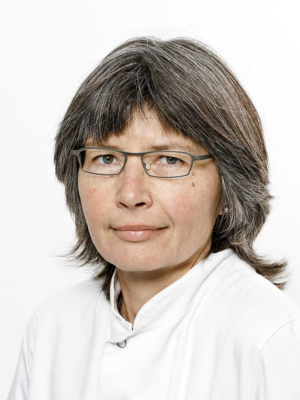National clinical study
CIRCPAC – A National Randomized Trial Investigating the Clinical Benefit of circulating tumor DNA Guided Recurrence Surveillance after Resection for Pancreatic Cancer
In the present study, we will investigate if plasma circulating tumor DNA (ctDNA) combined with CT-scan guided surveillance increases the median overall survival compared with standard-of-care surveillance in patients with stage I-II PDAC and treated with resection and adjuvant chemotherapy.
The project received funding in 2020
Principal Investigator (PI)

Postdoc

Collaborators
Aarhus University Hospital
Rigshospitalet
Patient enrollment
536
Cancer
Pancreatic cancer
Type
Prospective interventional - randomised
Platform
?
Abstract
Perspectives
Pancreatic ductal adenocarcinoma (PDAC) is a dismal disease with surgery being the only potentially curable treatment. However, even for the patients receiving surgery for PDAC about 80% have a recurrence in the first few years postsurgery.
In the present study, we will investigate if plasma circulating tumor DNA (ctDNA) combined with CT-scan guided surveillance increases the median overall survival compared with standard-of-care surveillance in patients with stage I-II PDAC and treated with resection and adjuvant chemotherapy.
Background
In Denmark around 1,100 people are diagnosed with PDAC each year. Less than 20% are eligible for surgery since most patients are diagnosed with locally advanced or metastatic disease. Earlier detection of postoperative recurrence increases the number of treatment options and the likelihood of effective recurrence treatment. The guidelines in Denmark recommend measurement of liver enzymes and a history and clinical evaluation every 3 month the 1. year and then every 6 month for 2 years. The patients will only have a CT-scan if they have clinical symptoms of recurrence. With this surveillance program the patients often have severe metastatic disease and performance status 1 or 2 at time of recurrence, which limits the treatment options.
Observational studies in patients with PDAC have shown that serial analyses of ctDNA detect postoperative residual molecular disease before clinical recurrence is detected by CT-scan. Intensified surveillance by CT-scan should also enable earlier clinical recurrence detection than standard-of-care surveillance.
Aim
The primary aim is to investigate if plasma ctDNA combined with CT-scan guided surveillance increases the median overall survival compared with standard-of-care surveillance of patients resected for stage I and II PDAC and treated with 4-6 months of adjuvant chemotherapy. Secondary aims include survival benefit at 3- and 5 years, lead time between positive ctDNA analysis and recurrence detected on a CT-scan, cost effectiveness, and quality of life.
Methods
A 1:1 randomized trial including 536 patients surgically resected for PDAC at four surgical departments in Denmark. Patients will be included from five oncological departments in Denmark (Aalborg, Aarhus, Herlev, Odense, and Roskilde). Patients will be randomized upon finishing 4-6 months of standard adjuvant chemotherapy to either Arm A (experimental) or Arm B (control).
In Arm A patients will have blood drawn for ctDNA analyses alongside routine blood sampling every 3 months for 5 years or until disease recurrence. The plasma ctDNA analysis will be performed within one month after blood sampling and the patient will be informed about the result of ctDNA. If plasma ctDNA is positive at time of randomization or during follow-up then a CT-scan will be performed every 3 months until time of recurrence, or up to 5 years. If plasma ctDNA is negative at time of randomization or during follow-up then CT-scan will only be performed every 6 months until time of recurrence or up to 5 years.
In Arm B patients will follow the standard follow-up program with measurement of liver enzymes and a history and clinical evaluation every 3 month the 1. year and then every 6 month for 2 years. The patients in arm B will only have a CT-scan if they have clinical symptoms of recurrence. The patients in Arm B will have blood samples drawn at month 6, 9, and 12, and half yearly after this up to 5 years, or until disease recurrence. The plasma ctDNA analyses in arm B will first be performed at the end of the study.
Expected outcome
This study will demonstrate the feasibility and clinical benefit of plasma ctDNA-guided surveillance after adjuvant chemotherapy in patients resected for stage I + II PDAC.
ADDRESS FOR THE SECRETARIAT
Science Center Skejby, MOMA
Brendstrupgårdsvej 21, build. A
8200 Aarhus N
CONTACT
ctDNA@clin.au.dk
+45 78 45 53 39

